Do you have a question about the Yamaha XSR900 and is the answer not in the manual?
Owner's responsibilities, safe riding techniques, and hazard avoidance.
Importance of protective apparel and avoiding carbon monoxide poisoning.
Guidelines for adding cargo and genuine Yamaha accessories.
Cautions on aftermarket parts, tires, and procedures for transporting the motorcycle.
Left view, right view, and identification of controls and instruments.
Detailed layout and identification of handlebar controls and instrument panel.
How to activate, set, adjust, and deactivate the cruise control system.
Explanation of engine performance (D-MODE) and traction control (TCS) modes.
Operation of the clutch-less quick shifter and the brake control (ABS) system.
Operation of the main switch, steering lock, and handlebar switches.
Identification and function of various indicator lights and the main display.
Navigating the settings menu to adjust units, clock, brightness, and system modes.
Operation of brake levers, pedals, and the brake control (BC) system.
Operation of the fuel tank cap and information on fuel and related components.
Adjusting seat, footrests, handlebars, forks, and shock absorbers.
Functionality of the sidestand and the ignition circuit cut-off system.
Pre-ride checks for fuel, engine oil, coolant, and tire condition/pressure.
Pre-ride checks for brake operation, clutch, drive chain, and cables.
Pre-ride checks for fasteners, lights, switches, and sidestand operation.
Guidelines for engine break-in and safe engine starting procedures.
Proper techniques for shifting gears, decelerating, and reducing fuel consumption.
Procedures for parking the motorcycle safely and general handling tips.
Overview of maintenance schedules, tool kit contents, and specific maintenance charts.
Maintenance tasks for spark plugs, oil, coolant, air filter, engine idling, and tires.
Maintenance for wheels, clutch, brakes, chain, cables, pedals, levers, sidestand, swingarm, forks, and steering.
Maintenance for battery, fuses, lights, and general troubleshooting guidance.
Procedures for diagnosing and resolving engine overheating and common issues.
Guidelines for cleaning the motorcycle, including cautions for matte finishes and improper methods.
Procedures for storing the motorcycle, including long-term storage recommendations.
Key technical specifications including dimensions, engine, fuel, tires, and electrical system.
Recording vehicle identification and engine serial numbers for registration and parts ordering.
Location of the model label and explanation of vehicle data recording by the ECU.
Information regarding Australian motorcycle noise control system regulations and tampering prohibitions.
Owner's responsibilities, safe riding techniques, and hazard avoidance.
Importance of protective apparel and avoiding carbon monoxide poisoning.
Guidelines for adding cargo and genuine Yamaha accessories.
Cautions on aftermarket parts, tires, and procedures for transporting the motorcycle.
Left view, right view, and identification of controls and instruments.
Detailed layout and identification of handlebar controls and instrument panel.
How to activate, set, adjust, and deactivate the cruise control system.
Explanation of engine performance (D-MODE) and traction control (TCS) modes.
Operation of the clutch-less quick shifter and the brake control (ABS) system.
Operation of the main switch, steering lock, and handlebar switches.
Identification and function of various indicator lights and the main display.
Navigating the settings menu to adjust units, clock, brightness, and system modes.
Operation of brake levers, pedals, and the brake control (BC) system.
Operation of the fuel tank cap and information on fuel and related components.
Adjusting seat, footrests, handlebars, forks, and shock absorbers.
Functionality of the sidestand and the ignition circuit cut-off system.
Pre-ride checks for fuel, engine oil, coolant, and tire condition/pressure.
Pre-ride checks for brake operation, clutch, drive chain, and cables.
Pre-ride checks for fasteners, lights, switches, and sidestand operation.
Guidelines for engine break-in and safe engine starting procedures.
Proper techniques for shifting gears, decelerating, and reducing fuel consumption.
Procedures for parking the motorcycle safely and general handling tips.
Overview of maintenance schedules, tool kit contents, and specific maintenance charts.
Maintenance tasks for spark plugs, oil, coolant, air filter, engine idling, and tires.
Maintenance for wheels, clutch, brakes, chain, cables, pedals, levers, sidestand, swingarm, forks, and steering.
Maintenance for battery, fuses, lights, and general troubleshooting guidance.
Procedures for diagnosing and resolving engine overheating and common issues.
Guidelines for cleaning the motorcycle, including cautions for matte finishes and improper methods.
Procedures for storing the motorcycle, including long-term storage recommendations.
Key technical specifications including dimensions, engine, fuel, tires, and electrical system.
Recording vehicle identification and engine serial numbers for registration and parts ordering.
Location of the model label and explanation of vehicle data recording by the ECU.
Information regarding Australian motorcycle noise control system regulations and tampering prohibitions.
| Displacement | 889 cc |
|---|---|
| Bore x Stroke | 78.0 mm x 62.1 mm |
| Compression Ratio | 11.5:1 |
| Fuel System | Fuel Injection |
| Ignition System | TCI |
| Starter System | Electric |
| Transmission | 6-speed |
| Final Drive | Chain |
| Frame | Diamond |
| Front Suspension | Telescopic fork |
| Front Tire | 120/70ZR17M/C (58W) |
| Rear Tire | 180/55ZR17M/C (73W) |
| Seat Height | 810 mm |
| Wheelbase | 1, 495 mm |
| Ground Clearance | 140 mm |
| Fuel Tank Capacity | 14 L |
| Wet Weight | 193 kg |
| Engine Type | Liquid-cooled, 4-stroke, DOHC, 3-cylinder |
| Maximum Power | 87.5 kW (119.0 PS) @ 10, 000 rpm |
| Maximum Torque | 93 Nm (9.5 kg-m) @ 7, 000 rpm |
| Rear Suspension | Swingarm |
| Front Brakes | Dual hydraulic disc |
| Rear Brakes | Single hydraulic disc |
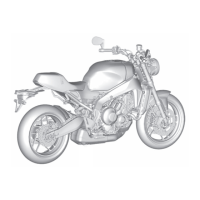
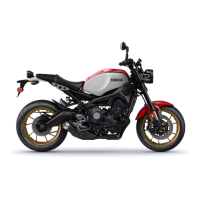
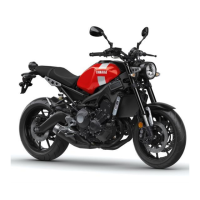
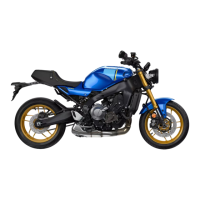
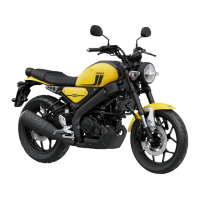
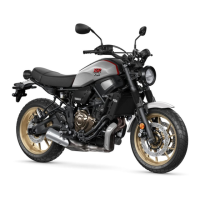
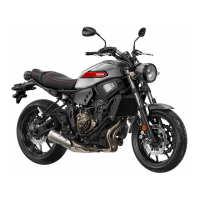
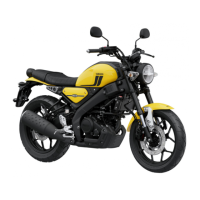
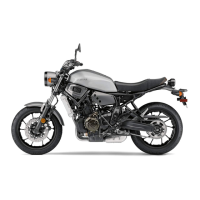
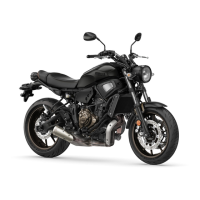
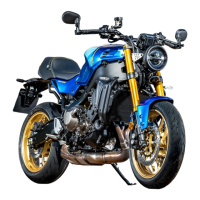
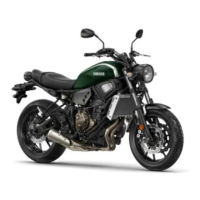
